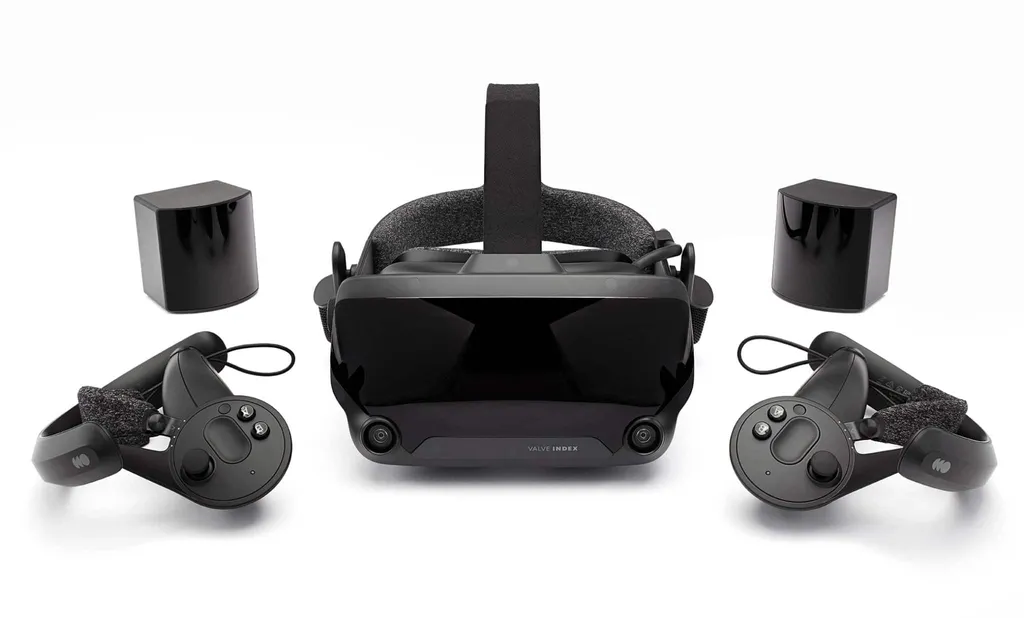Valve today announced preorders and revealed the specs for its Index PC VR system. Index is not made in partnership with HTC, the company Valve partneted with on the original SteamVR headset (Vive). It’s a first party product from Valve Corporation.
Index is a PC VR headset powered by the SteamVR platform. It should be compatible with all existing SteamVR games. However older titles may not be optimized for the Index Controllers as they were built with HTC controllers in mind.
Preorders are available tomorrow, and the product will ship some time in June. No games are listed as being included.
Pricing
The full Index bundle is $999. This includes the headset, the two VR controllers, two SteamVR Tracking 2.0 base stations, and all required cables and mounts.

Owners of the HTC Vive or Vive Pro can purchase the headset alone for $499, the controllers alone for $279, or the headset and controllers for $749. The Index headset and controllers work with any HTC base stations.

Valve base stations can be purchased individually for $149 each. Note that they will not work with 1.0 hardware such as the original Vive headset and controllers.
High Refresh Rate RGB LCD Panels
Valve partnered with HTC to launch the Vive back in 2016. It had dual 1080×1200 PenTile OLED panels. The Vive Pro released in 2018 increased this to dual 1440×1600.
The Index uses two custom 1440×1600 LCD panels. While they are the same resolution as the Vive Pro, they have full RGB subpixels instead of PenTile. This means each pixel has three subpixels instead of just two.
This provides a higher detail image with reduced “screen door effect”. However, you don’t get the deep blacks of OLED since LCD displays use a backlight.
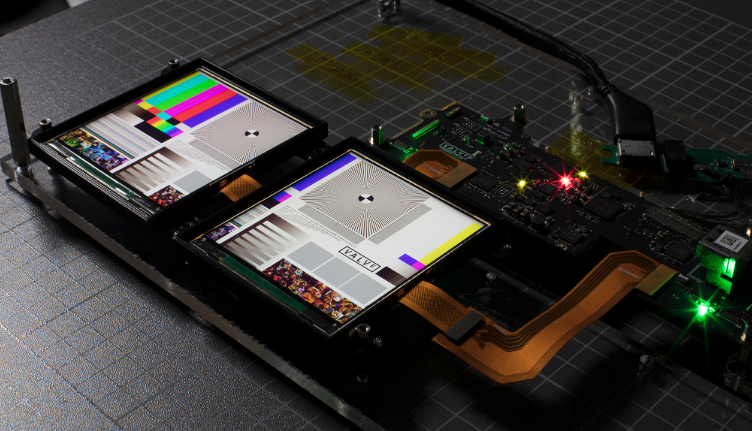
The refresh rate of the Vive and Vive Pro was 90Hz. Index increases this to 120Hz, with an optional “experimental” 144Hz mode. Valve claims full backwards compatibility with 90Hz content.
The pixel persistence is down to just 0.33 ms, which is the lowest revealed of any headset we are aware of. Valve claims this achieves subpixel scale persistence at typical head rotation speeds. In theory, this should entirely eliminate motion blur.
Dual Element Lenses, Wider Field Of View
Most current VR consumer headsets have a binocular horizontal field of view of around 100°, give or take around 10°.
Valve is not disclosing the exact field of view of the Index, citing the lack of industry standard measurement. The company did however say that it should be “20 degrees more than Vive for the average customer.”
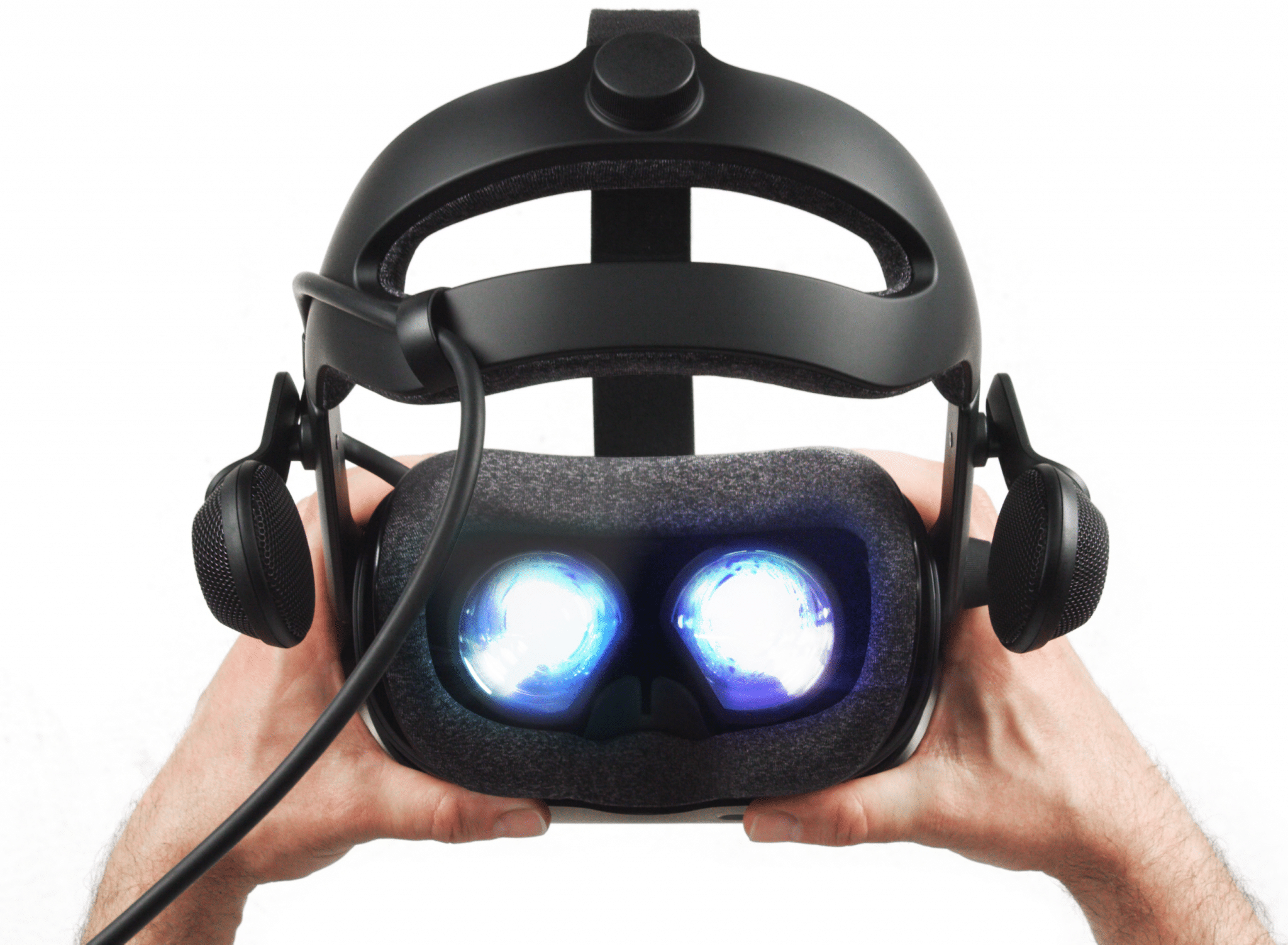
Valve managed to increase the field of view without adding distortion and while maintaining optical sharpness by using dual element lenses. The lenses are also canted, meaning pointing slightly outwards instead of directly forwards.
The lenses have a wide sweet spot, meaning the center is not the only area of sharpness. This lets you use your eyes to look around as well as your head.
Wearable Controllers With Finger Detection
The Index Controllers were codenamed “Knuckles” during development. Since they are strapped to your hand, you can fully let go of them. This allows for more natural grabbing and throwing of virtual objects.
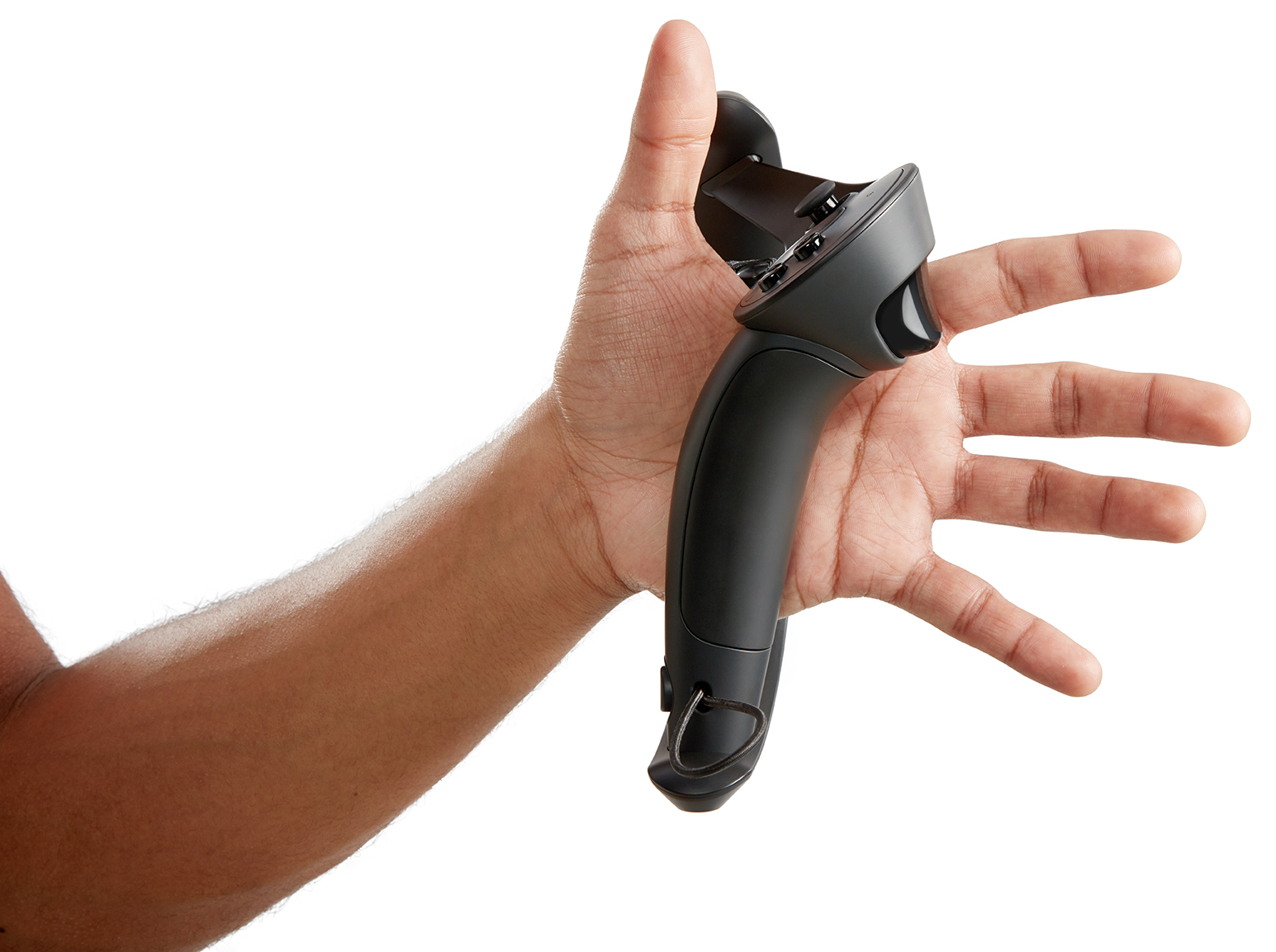
The controllers also feature basic finger tracking for each finger. The concept of finger tracking through capacitive sensors was first shipped in the Oculus Touch controllers in late 2016. But whereas Touch only tracks the thumb and index finger, Valve’s controllers track the other three fingers too. This allows for a much wider range of gestures and should increase the feeling of hand presence.
![]()
As the Index Controllers are worn, users have two adjustments to get the right fit for their hand size. You push in a tab at the top of the strap, then pull a cord at the bottom to tighten the fit.
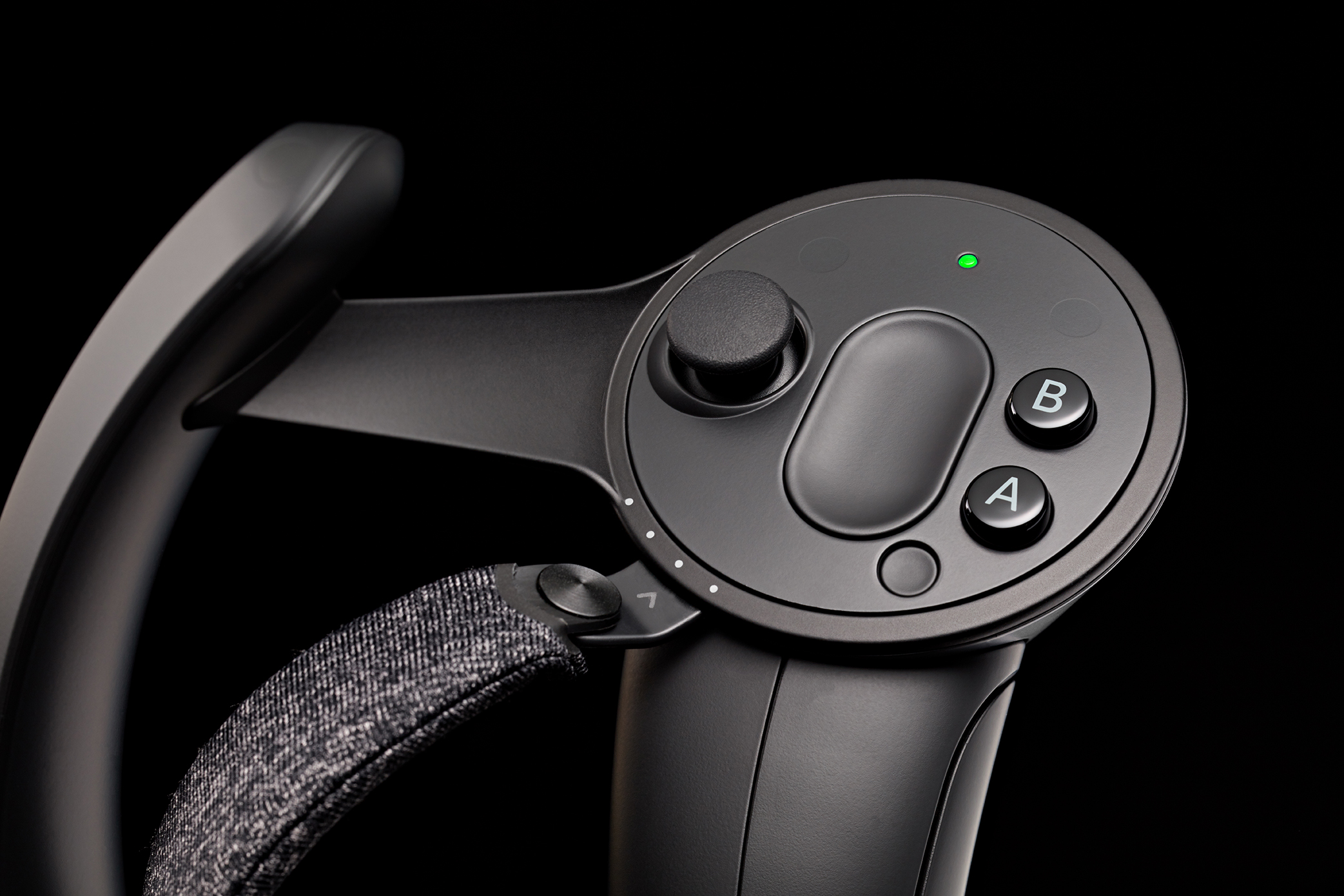
Each controller features a thumbstick, a small touchpad, 2 buttons, an analog index trigger, and a system button. Additionally, the main body of the controller can detect the force of the user’s grip, allowing for squeezing of virtual objects.
The controllers are charged by USB Type-C and have a battery life of 7+ hours.
Full Optical & Ergonomic Adjustment
Valve’s goal is that each user can adjust the lenses and comfort of Index to get an optimal fit.
To achieve this, Index has a total of four adjustments: interpupillary distance, lens-eye distance, the rear strap knob, and the top strap adjustment.
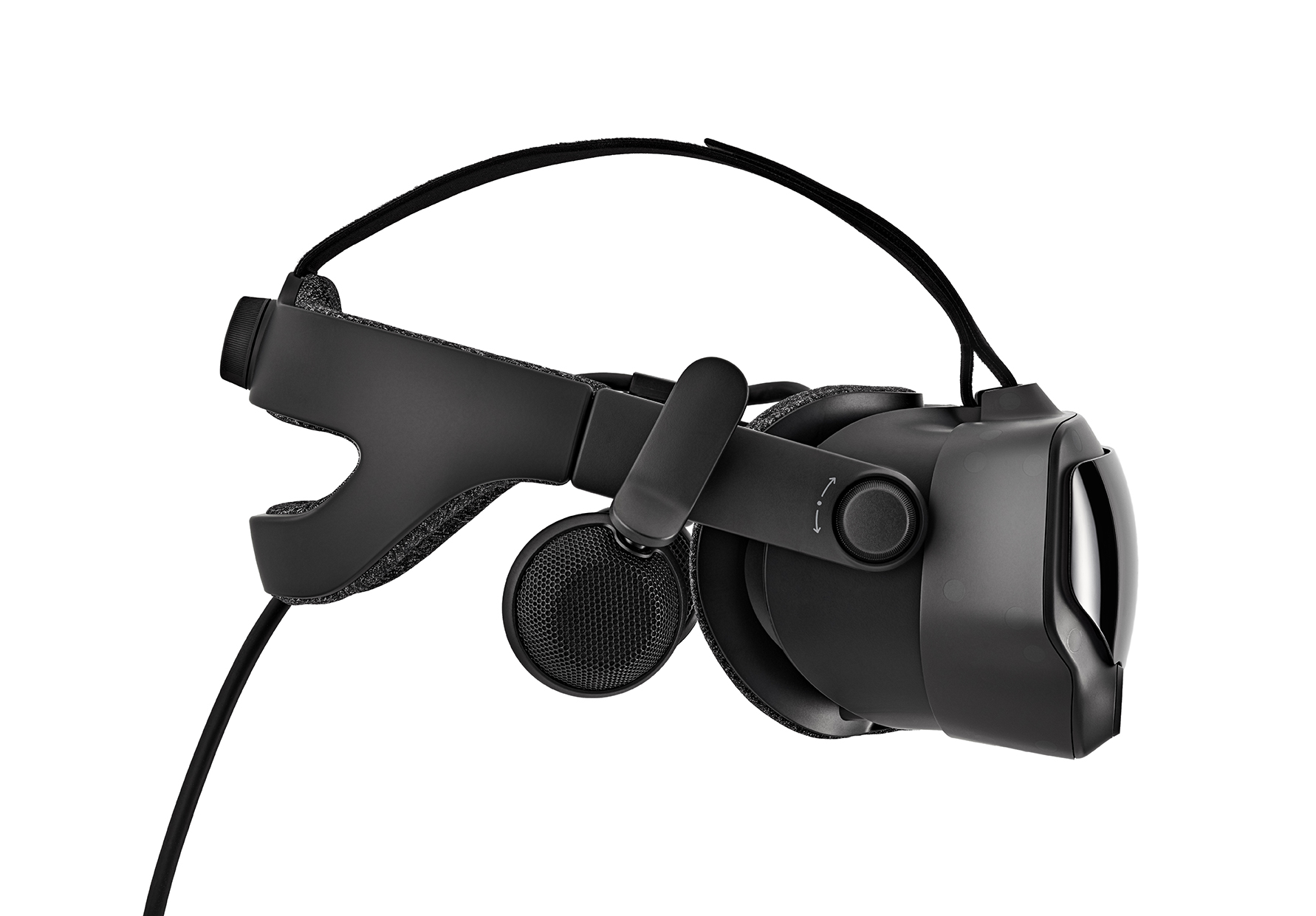
Unlike most headsets with lens-eye adjustment, Index’s lenses move independently of the facial interface. This allows the lenses to get much closer to your eyes, enabling the Index’s wide field of view. A 1 centimeter adjustment of the lenses results in a 30 degree difference in field of view.
Valve claims that Index comfortably fits 95% of adult heads.
Nearfield Off-Ear Speakers
Valve has gone all-out for the audio solution. Instead of headphone drivers, Index features nearfield off-ear speakers.
When we tried the Index we found the audio quality to be excellent, with precise spatial positioning.
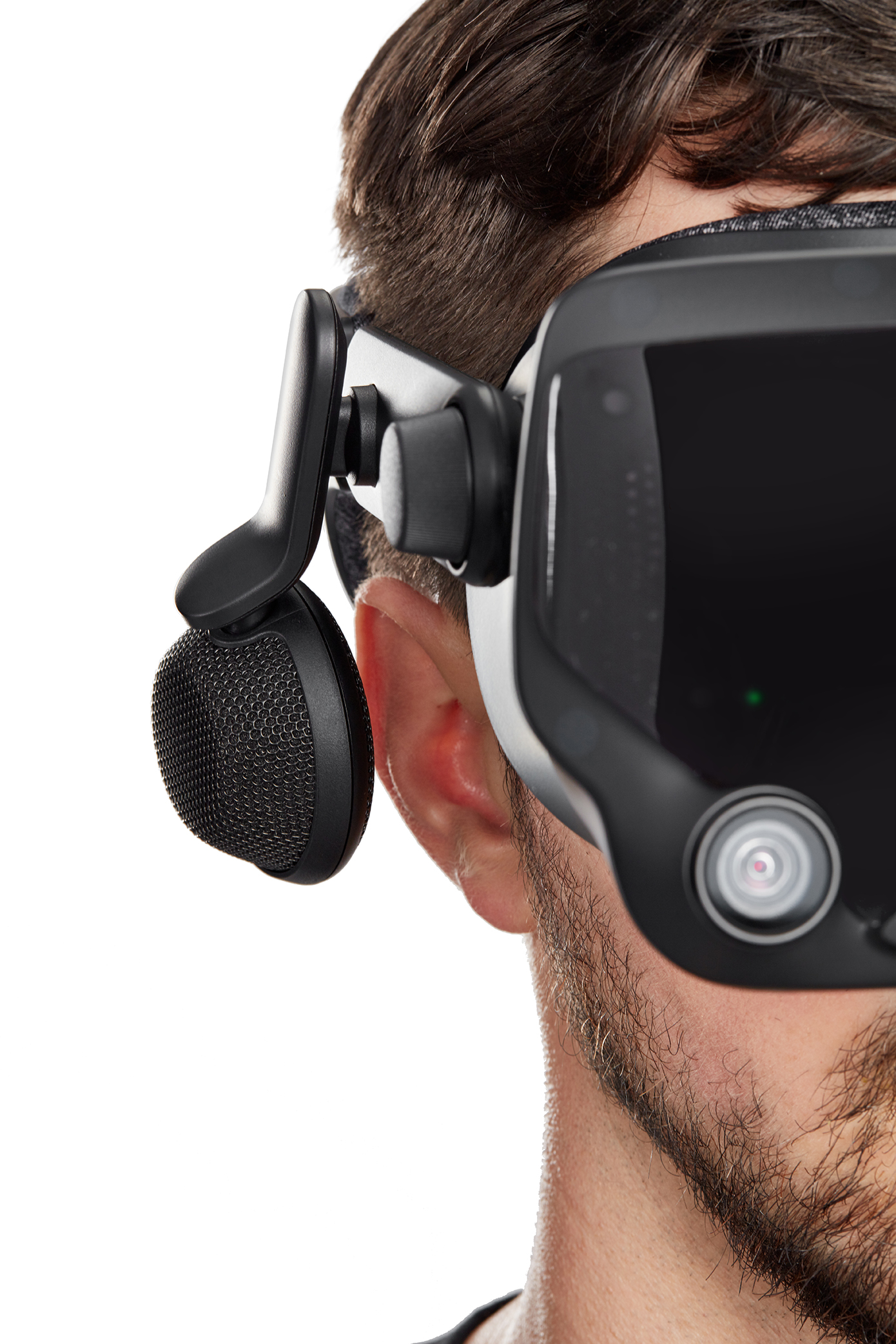
The speakers don’t touch your ears, so you can still hear people in the room with you and they don’t get uncomfortable to wear. However, like other non-contact VR audio solutions, people in the room can also hear what you’re hearing.
SteamVR Tracking 2.0
Both the headset and controllers are tracked by the SteamVR Tracking 2.0 system. Two base stations are included in the $999 bundle, or can be purchased separately for $149 each.
Base stations are required to use Index. The front cameras are for passthrough, they do not perform inside-out tracking.
Compared to the original 1.0 used on the original Vive, the new base stations are smaller, quieter, and use less power. Valve claims they’re also more mechanically reliable and less expensive to produce.
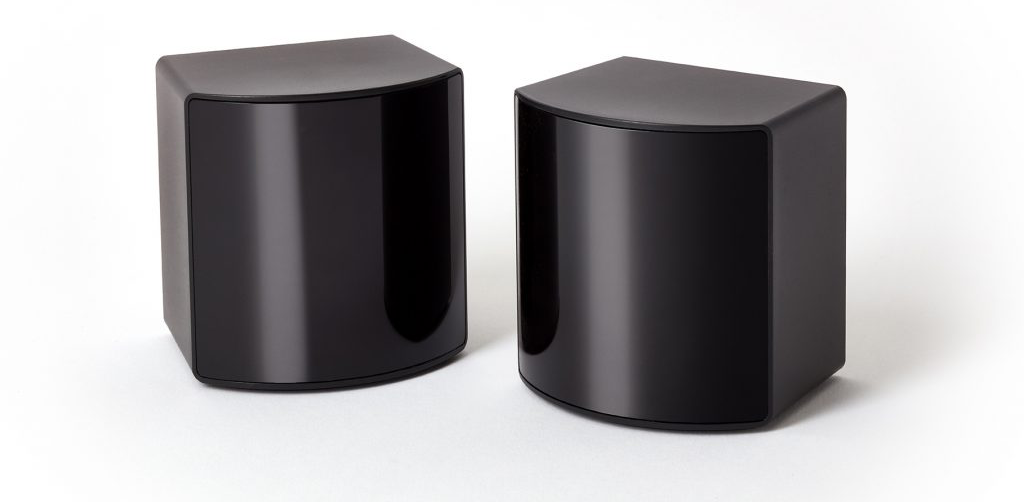
Whereas the old system had a maximum of two base stations per play space, 2.0 increases that limit to four. So for $298 extra, Index buyers can upgrade to the absolute maximum VR tracking quality currently available anywhere.
While old base stations work with new devices, the new base stations will only work with hardware supporting them, such as the Valve Index or Pimax 5K+.
PC Requirements & Cables
Valve recommends using an NVIDIA GTX 1070 or better, but says a GTX 970 or AMD RX 480 will work as a minimum.
The headset connects to your PC via DisplayPort and USB. If you use USB 3.0 you’ll get access to camera passthrough mode, but the heaedset will work in USB 2.0 without that feature.
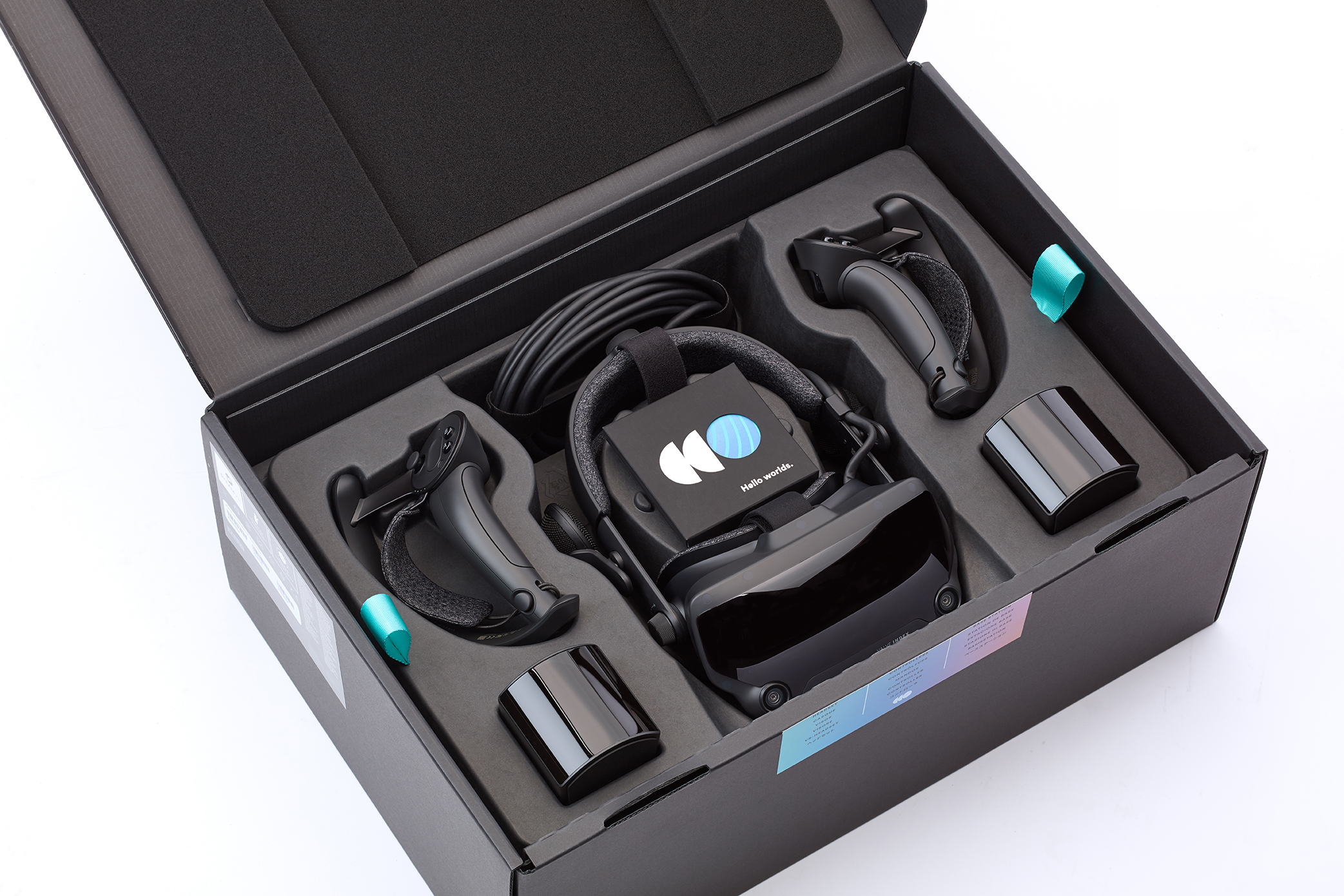
You’ll also need 3 power sockets in total. One for the headset and one for each base station. The base stations do not connect to your PC in any way however, so you can just cable them to the nearest socket to where you’ll be mounting them.
If you own a GPU with VirtualLink support, you can buy a VirtualLink cable for Index for $39.99. This negates the need for the DisplayPort, USB or power cable- it’s all done through a single USB Type-C connector.
Index will also work on macOS and Linux, but currently only a tiny fraction of SteamVR games support these operating systems.

